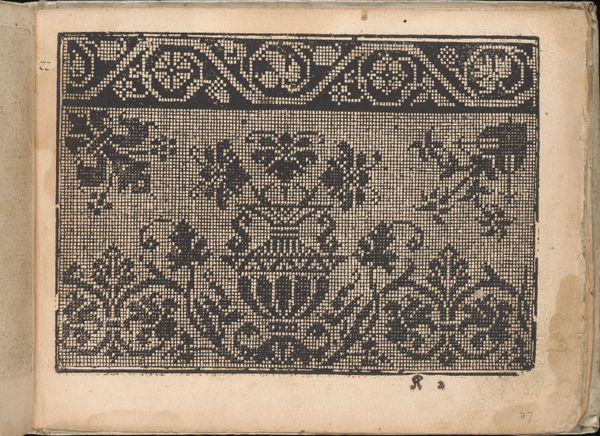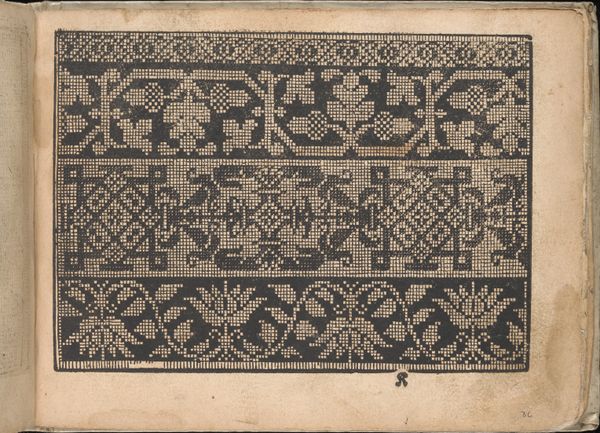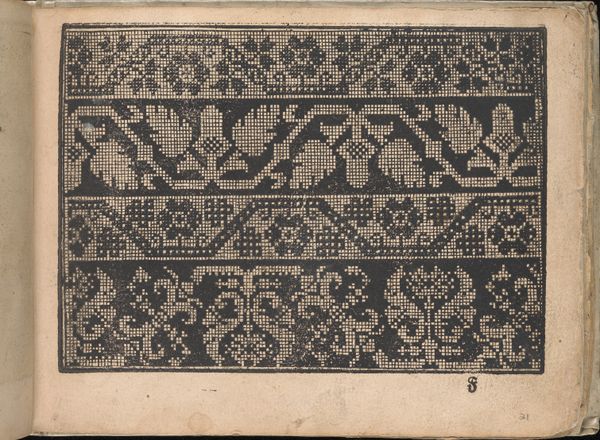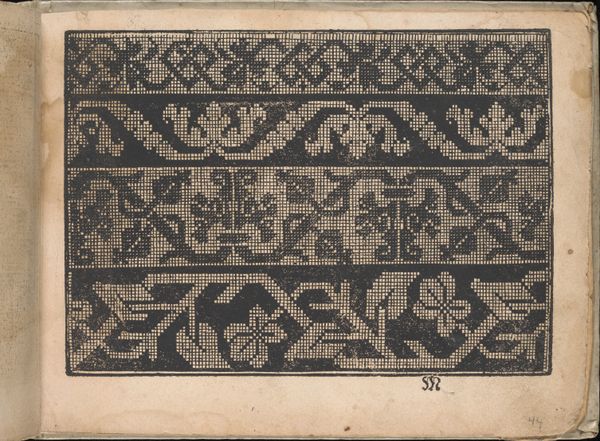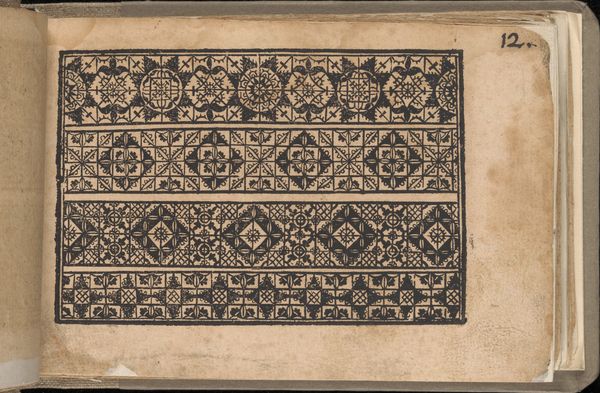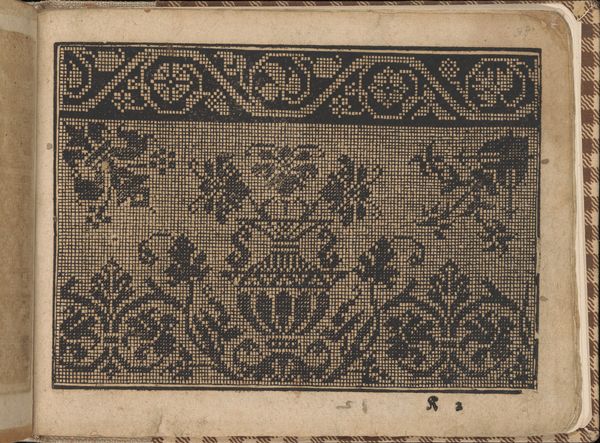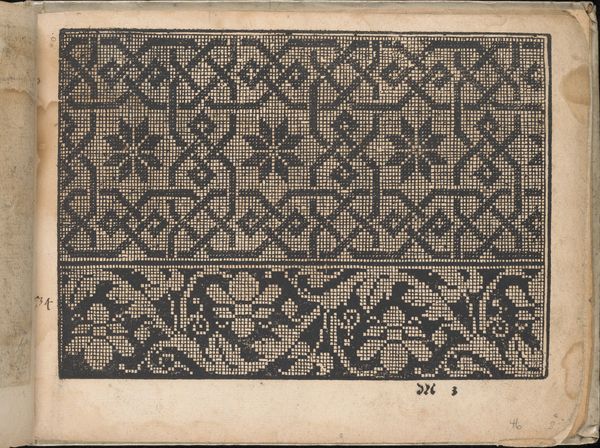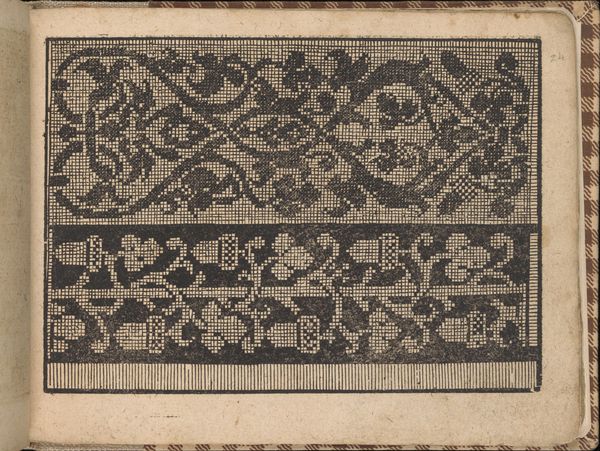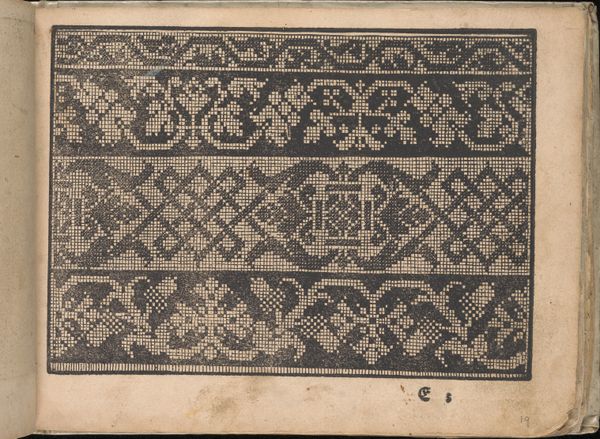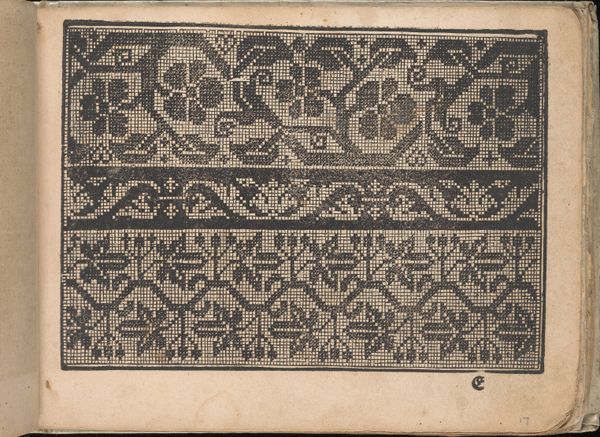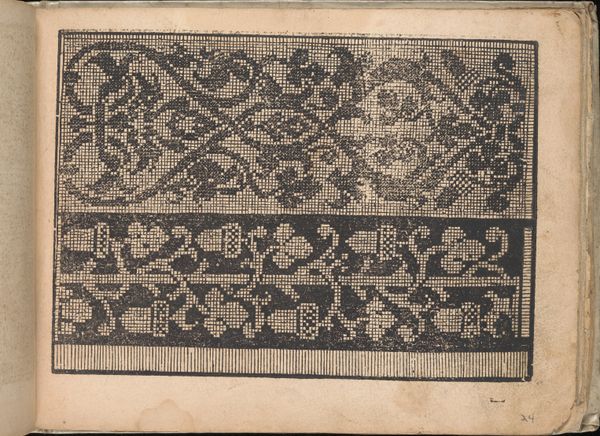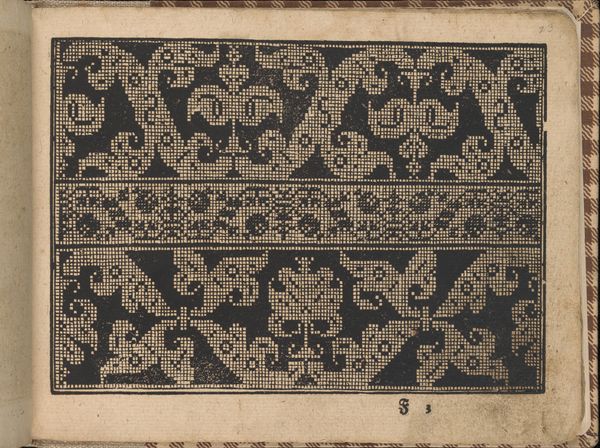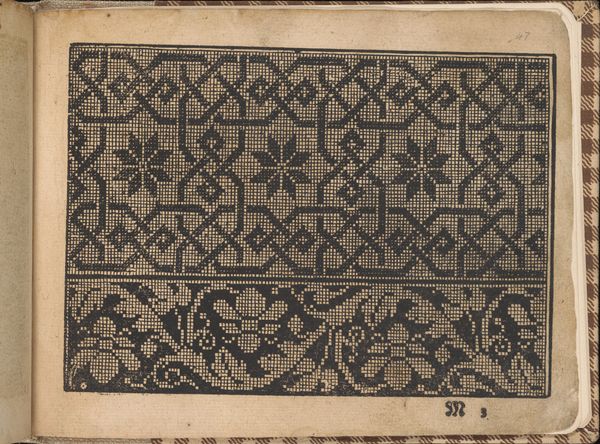
drawing, graphic-art, ornament, print, woodcut
#
drawing
#
graphic-art
#
ornament
# print
#
woodcut
Dimensions: Overall: 6 1/8 x 7 7/8 in. (15.5 x 20 cm)
Copyright: Public Domain
Editor: This is page 12r from "Neu künstlich Modelbuch" dated 1598 by Bernhard Jobin, currently at the Met. It's a woodcut print, an ornamental drawing for... well, for something! It's intricate and geometric, but also strangely organic with all those floral and vegetal elements. What do you see in this piece? Curator: I see a fascinating intersection of gender, labor, and print culture. These "model books" were pattern books, primarily used by women for embroidery and needlework. We should see these not merely as pretty patterns, but as a coded language through which women exercised creative agency and participated in the burgeoning print market of the 16th century. Editor: A coded language? Curator: Think about it: in a society where women's access to formal education and artistic training was limited, these books offered a means of artistic expression and skill-sharing. The designs themselves, often incorporating floral motifs, heraldic symbols, or biblical scenes, reflected their identities, aspirations, and the prevailing social narratives of the time. They weren't simply copying; they were actively reinterpreting and transmitting cultural values. Editor: That's a great point. It goes beyond just skill, suggesting women artisans had creative agency! Were these patterns accessible to all women? Curator: That’s the complex part. Print offered wider access than unique, hand-drawn patterns. Yet, economic realities still dictated who could afford such luxuries. The imagery, referencing courtly love or religious piety, reinforced existing class structures, but also subtly invited women into those discourses. It’s about power, access, and representation, wouldn't you agree? Editor: Absolutely. So this page represents more than meets the eye. What appears ornamental is actually a crucial insight into the social fabric of the time! Curator: Exactly. It forces us to rethink the roles of women, craft, and print in shaping early modern society. Hopefully, understanding this enriches the experience and contextualizes how you examine artworks of this nature from now on!
Comments
No comments
Be the first to comment and join the conversation on the ultimate creative platform.
